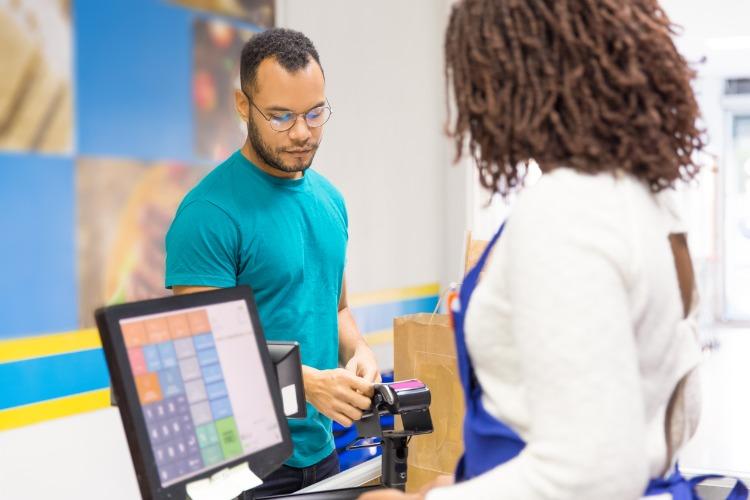How POS Data Enhances Demand Planning and Forecasting
Demand planning and forecasting are the backbone of any successful business, whether it’s a small boutique, a multinational corporation, or anything in between. When you perform these processes effectively, you make it easier for your business to maintain the right inventory levels, avoid stock shortages or surpluses, and respond proactively to shifts in market demand. On the flipside, poor forecasting can lead to major challenges, such as lost sales and wasted resources, not to mention a damaged reputation due to unmet customer expectations.
Fortunately, the rise of digital technology hasn’t just given rise to cutting-edge tech tools that can help businesses achieve more accurate forecasts—it has also made these solutions accessible to businesses of every size. With a modern POS system in your corner, for instance, your teams can do much more than process transactions. They’ll gain the ability to collect and analyze sales data in real time. From there, you can leverage this data to track emerging trends and make more informed decisions about how to optimize your operations. In essence, POS data bridges the gap between past performance and future projections, thereby enabling smarter planning.
Let’s dive deeper into the key ways that POS data revolutionizes demand planning and forecasting.
Real-Time Sales Insights
POS systems give you a window into your sales data as transactions occur. This means that you get to observe, in real time, which products are flying off the shelves from day to day and which move more slowly. Armed with this insight, you can pivot quickly in response to sudden shifts in demand. In the event that a new product starts gaining unexpected popularity, you can increase stock orders to capitalize on the trend. Conversely, you can scale back on products with declining interest to prevent overstocking and wasted resources.
More Accurate Perspective into Demand Patterns
Behind every sales spike or slump lies a story about your customers’ behavior and preferences. POS data helps uncover these stories by tracking trends over time. You might notice that sales surge during weekends, specific seasons, or even at certain times of the day. With this knowledge, you can better predict when demand will peak and prepare accordingly. Don’t take any seemingly random patterns for granted. Though they might not appear to mean anything at first glance, you’ll often find that they’re both consistent and actionable when you view them through the lens of comprehensive POS data.
Better Inventory Management
Managing inventory effectively can feel like walking a tightrope—too little stock frustrates customers, while too much ties up capital. POS data can help you strike the balance you need. Use your system to examine your sales history and current trends. These analyses will tell you exactly how much inventory to keep on hand. You’ll no longer have to do any guesswork or deal with frustrating inconveniences like stockouts and excess inventory. Automated systems can even trigger reorders when stock runs low, so you’re always prepared to meet demand without overcommitting resources.
More Effective Market Trend Analysis
Consumer preferences are constantly evolving, and businesses that fail to keep up risk losing relevance. POS data acts as a real-time pulse check on market trends that helps businesses detect shifts before they become widespread. If a particular product category is gaining traction, your business can capitalize on the trend early by adjusting your inventory and marketing strategies accordingly. It’s a more proactive approach aimed at maximizing profitability and positioning your business as an industry leader rather than a follower.
Personalized Promotions and Dynamic Pricing
A one-size-fits-all approach to pricing and promotions can be inefficient, as not all customers shop the same way. POS data enables your business to create discounts, loyalty rewards, and promotional campaigns based on actual purchasing behavior. For example, if certain products see more demand on specific days, you can schedule targeted promotions to boost sales further. You might even implement dynamic pricing models that adjust prices based on demand fluctuations, seasonal trends, or competitor pricing to maintain a competitive edge.
Supply Chain Optimization
Supply chain disruptions can ripple through a business, leading to delays, stock shortages, and lost revenue. POS data improves coordination between suppliers, manufacturers, and retailers to help mitigate these risks. When your business has accurate demand forecasts, you can better align your supply chain processes. It’s easier from here to make sure that stock levels remain balanced and deliveries arrive when needed. This reduces inefficiencies, minimizes waste, and ultimately results in a smoother, more responsive supply chain.
Improved Customer Trust and Satisfaction
Few things frustrate customers more than walking into a store or visiting a website only to find that their desired product is out of stock. Consistently meeting demand builds trust and encourages repeat purchasing. POS data allows you to anticipate customer needs with greater accuracy and keep your shelves stocked with the right products at the right time. In addition, you can use insights from purchasing history to offer personalized recommendations, which further enhance the customer experience and foster long-term loyalty.
The contemporary business world is so fast-paced and unpredictable that it’s no longer an option for businesses to rely on guesswork for demand planning. POS data provides the real-time insights your business needs to make smarter decisions and stay ahead of market trends and customer expectations. Leverage this data effectively and you’ll be on the right track to optimizing operations, improving customer satisfaction, and positioning your business for long-term success.

